Everything you need to know about volcanoes
- Published
- comments
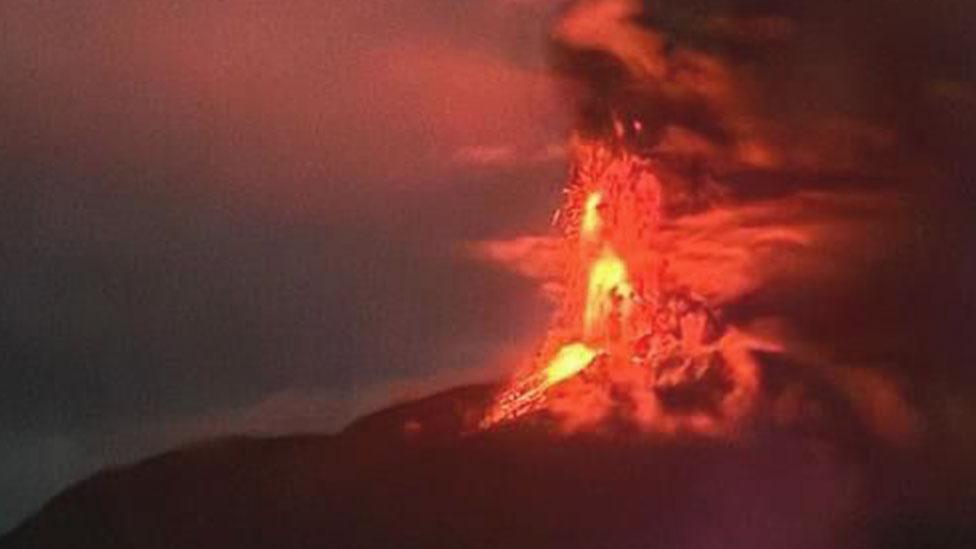
A red flash of lava above the erupting Mount Ruang, an Indonesian volcano
There are over one thousand active volcanoes on Earth - in fact there are around 20 volcanic eruptions each day.
But we don't tend to hear about them because the majority of the eruptions happen in remote areas - so are unlikely to cause major damage.
But what exactly are volcanoes, how do they form, and how can we predict them?
Take a look at our guide below to find out more.
What is a volcano?
The Big Question: Why do volcanoes actually erupt?
A volcano is a rupture on the Earth's crust, which allows lava, ash, and gases to escape when magma rises to the surface.
Magma is the red-hot liquid rock that usually lives below the Earth's core.
Volcanoes are evidence of the pressure and powerful forces at work inside the Earth.
Indonesia is home to more volcanoes than any other country in the world. In contrast, the UK doesn't have any active volcanoes.
Are there different types of volcanoes?
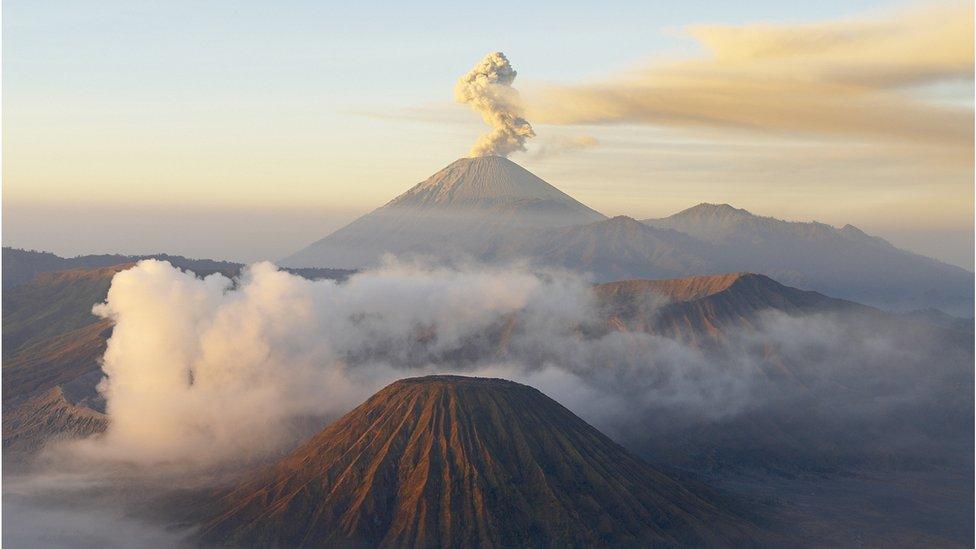
The Bromo and Semeru volcanoes on Java Island in Indonesia
There are three common types of volcano: composite volcanoes, often the most deadly; shield volcanoes, which are large but usually less violent; and cinder cones.
Different types of volcanoes are formed based on the viscosity of the magma.
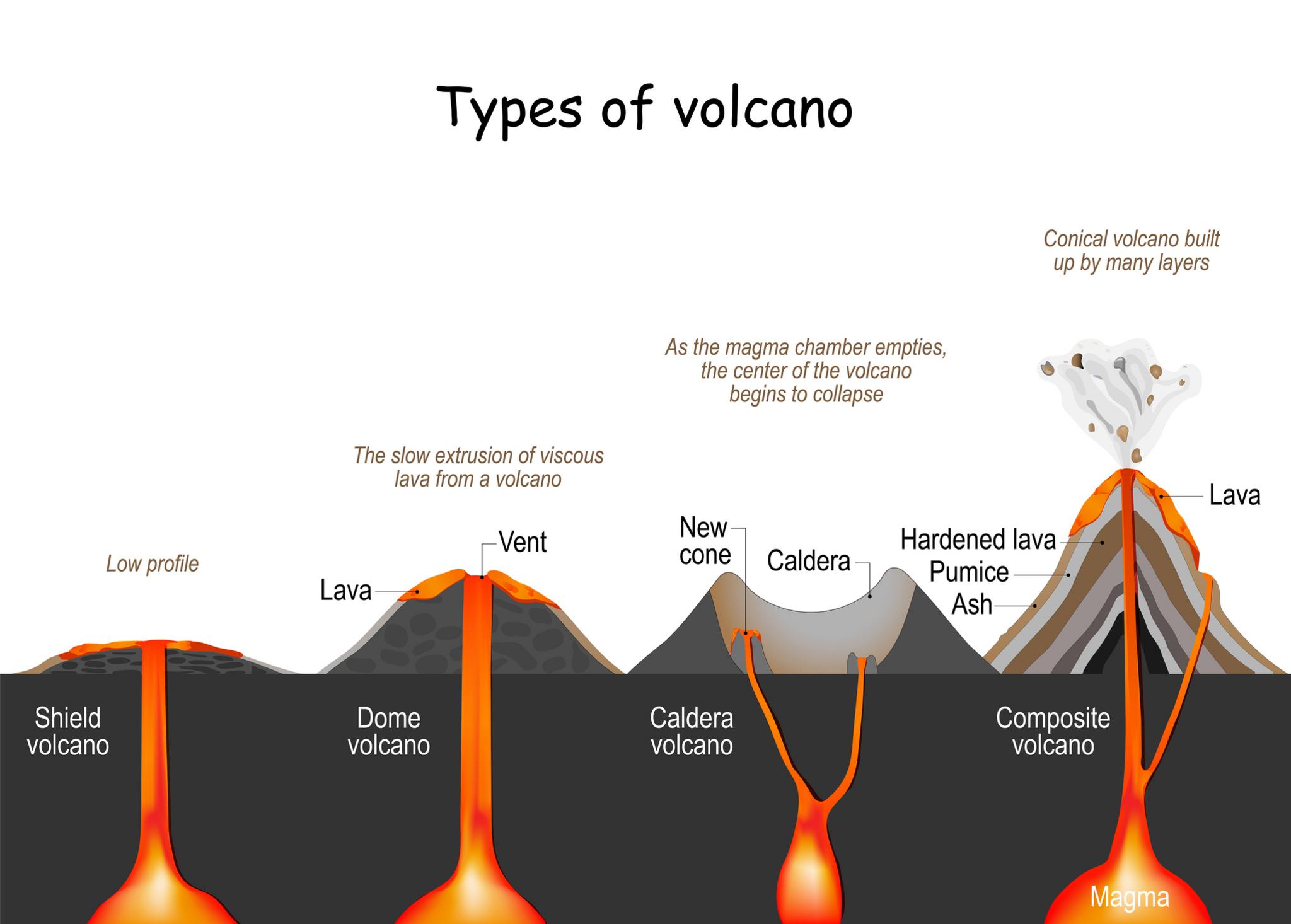
Viscosity describes how thick a liquid is and how slowly or quickly it will flow. When something has a high viscosity, it is thick and will flow slowly and a low viscosity means the opposite.
An eruption of highly viscous magma is likely to produce a volcano with steep slopes because it doesn't flow that far from where it erupted.
Meanwhile, a volcano that erupts less viscous magma will be flatter with more gentle slopes because the magma flows further away.
What effects do volcanoes have?
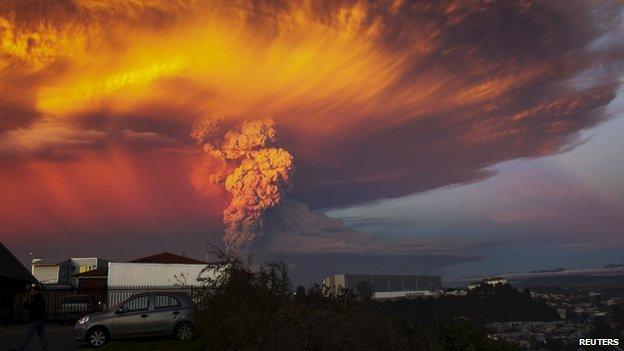
Smoke and ash rise from the Calbuco volcano
When a volcano erupts, it is likely to effect the weather and cause rain, lightning and thunder.
That happens because ash particles are forced into the atmosphere, which attract water droplets. It may also create volcanic fog.
Volcanoes can also have an effect on the climate, either cooling temperatures or increasing them.
It's because when volcanoes erupt, they release CO2 and other gases into the atmosphere. While it sounds scary, humans actually produce more CO2 than a volcano does.
Meanwhile ash and sulphur dioxide has a cooling effect.
A top volcanologist shows Martin actual pieces of cooled lava from active eruptions
Volcanoes can be very dangerous as fast-moving lava can kill humans, plants and animals.
Falling ash can make it difficult to breathe because unlike ash from burning wood which is soft, volcanic ash is coarse and feels like grains of sand.
Volcanic ash can turn daylight into complete darkness when it spreads over large areas of the sky and reduced visibility.
It can also have an impact on air travel as it can damage the vehicles. Volcanic ash is also very difficult to clean up.
Can we predict when a volcano is going to erupt?
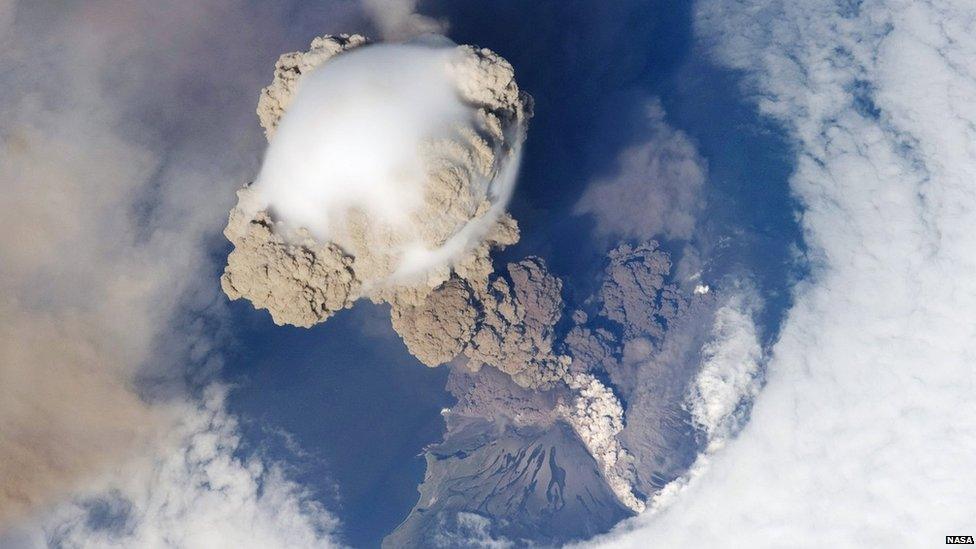
The view from space of the Sarychev volcano
Scientists who specialise in volcanoes are called volcanologists. There are clues volcanologists can look out to predict when a volcano is about to erupt.
One of the key way to do this is by looking at the activity taking place deep beneath the Earth's surface, specifically when magma starts to move underground.
This movement often generates earthquakes. However, there are times when the movements in the ground are so tiny that they're not actually felt on the surface.
Another way volcanologists can predict an eruption involves measuring gases released both in and around the volcano.
Working out if a volcano will erupt in future years is still impossible.
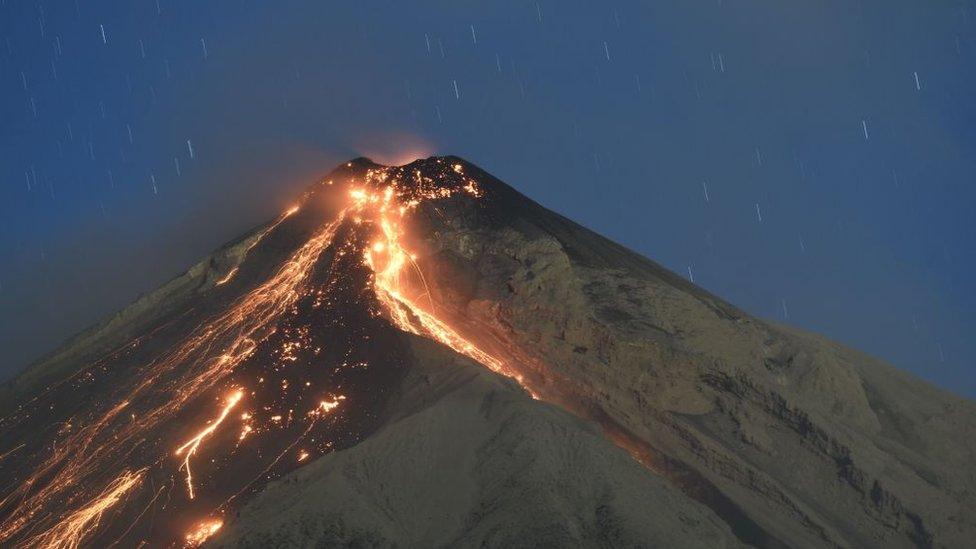
This is the Fuego volcano, which erupted in February 2018 in Guatemala
Volcanologists use lots of different tools and instruments to help them monitor eruptions and measure their scale and impact.
This includes seismometers which record movements in the ground, special instruments that detect and measure gas, satellites which circulate the Earth and can pick up tiny millimetric movements, and even drones.
If an eruption is likely to happen very soon behaviour of animals in the area can also be a clue.
Animals often seem to be able to 'detect' when an eruption is coming, and they become agitated.
One in 10 people in the world live within 'danger range' of an active volcano.
There are amore than 1500 'active' volcanoes in the world. Volcanologists disagree on what comes under the term 'active', but 1510 volcanoes have erupted in the last 10,000 years, which means they are active in the world of volcanoes. There are thought to be many more volcanoes on the sea bed.
The biggest volcano in the world is Mauna Loa in Hawaii. Its whole volume is about 80,000 cubic kilometres.
Sometimes lightning is seen in volcanic clouds. It's not clear why this happens but it could be to do with lots of hot particles bashing into each other, causing static charges.
Indonesia has the largest volcano chain in the world. Chile has the second largest chain, with about 500 that are potentially active.
Do volcanoes do anything good?
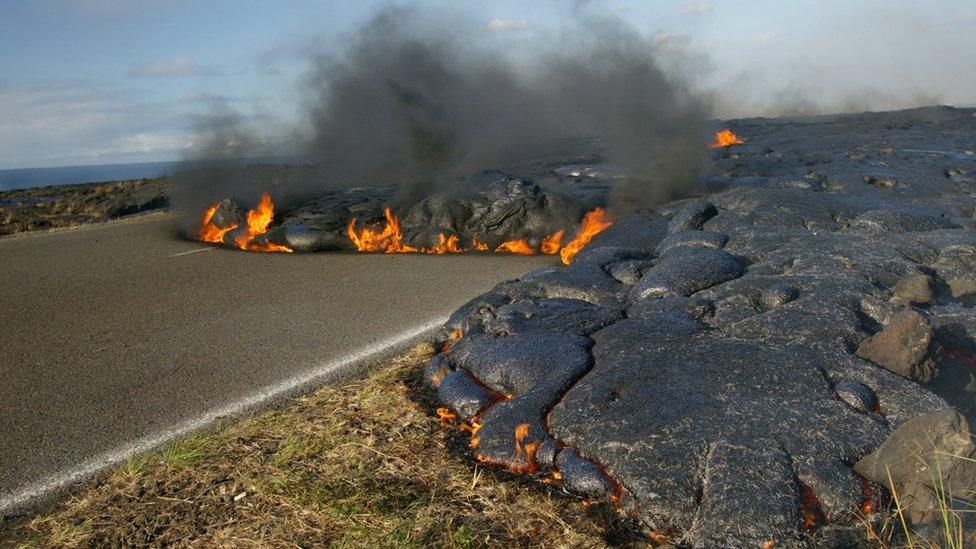
This is lava flowing out over the road from the Kilauea volcano in Hawaii in 2018. This volcano has been erupting since 2002.
Volcanic ash is very good for soil, which helps plants to grow after a volcano.
Volcanic slopes left after an eruption are very steep, so rare and delicate plants and animals can set up home there and be well protected.
- Published16 August 2015
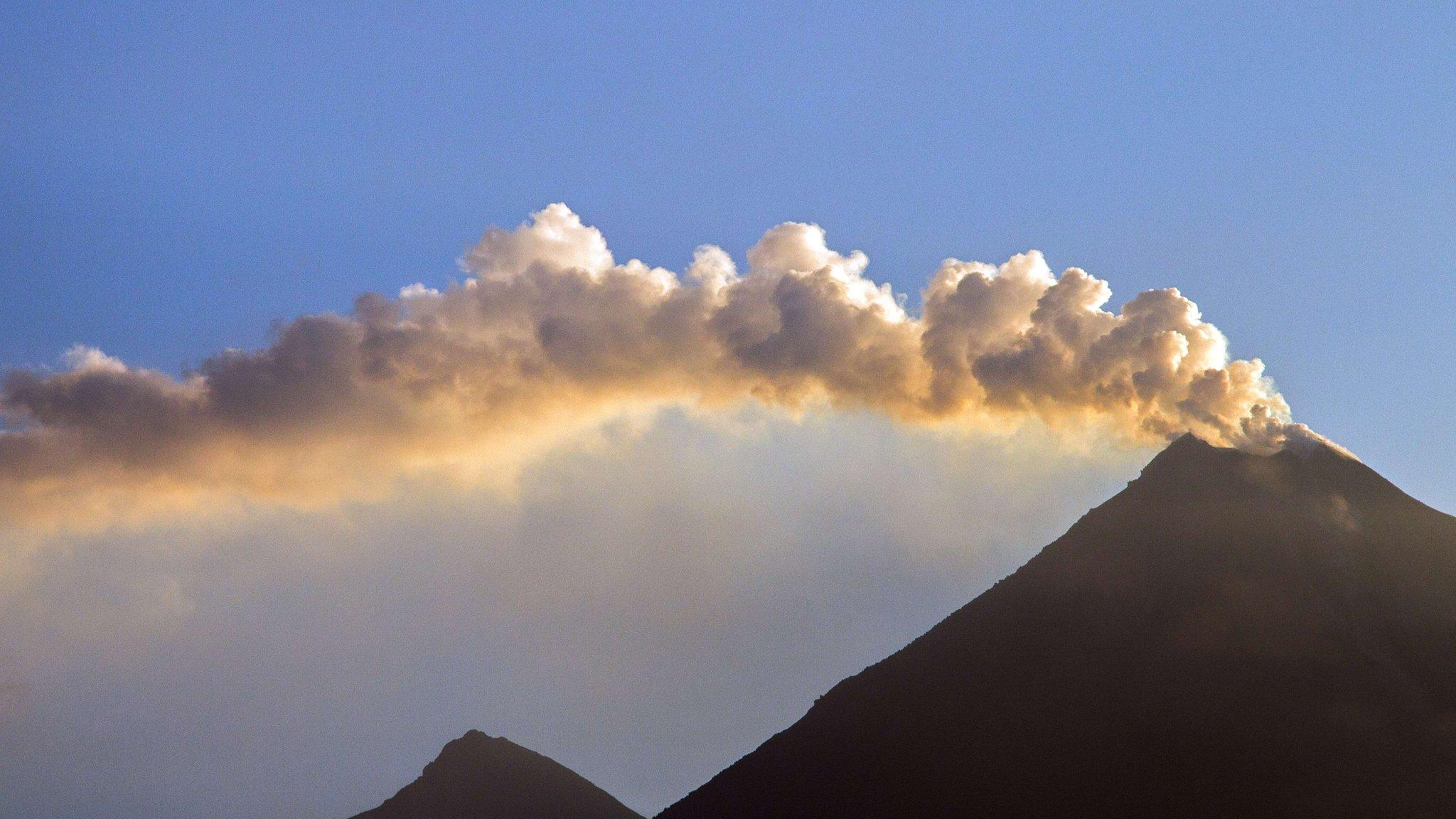
- Published12 July 2015
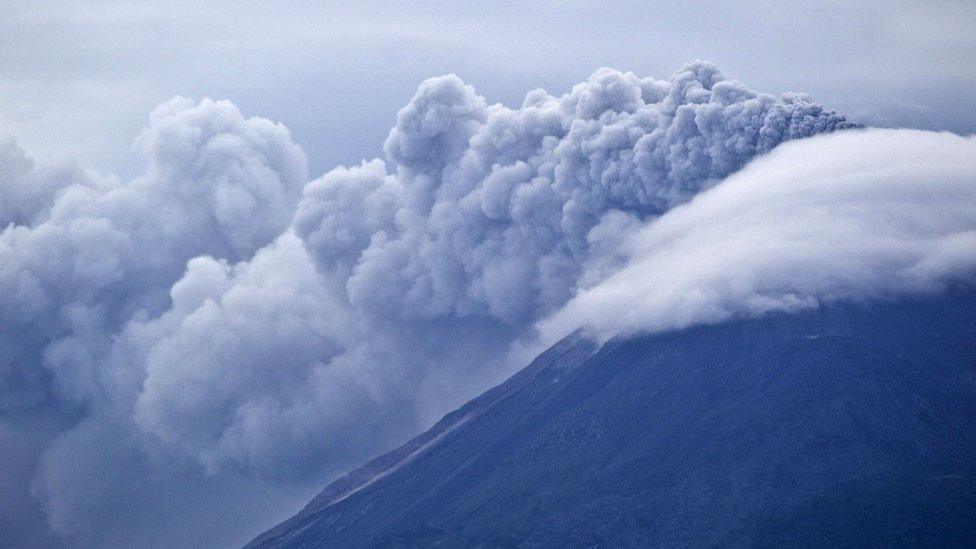
- Published23 April 2015
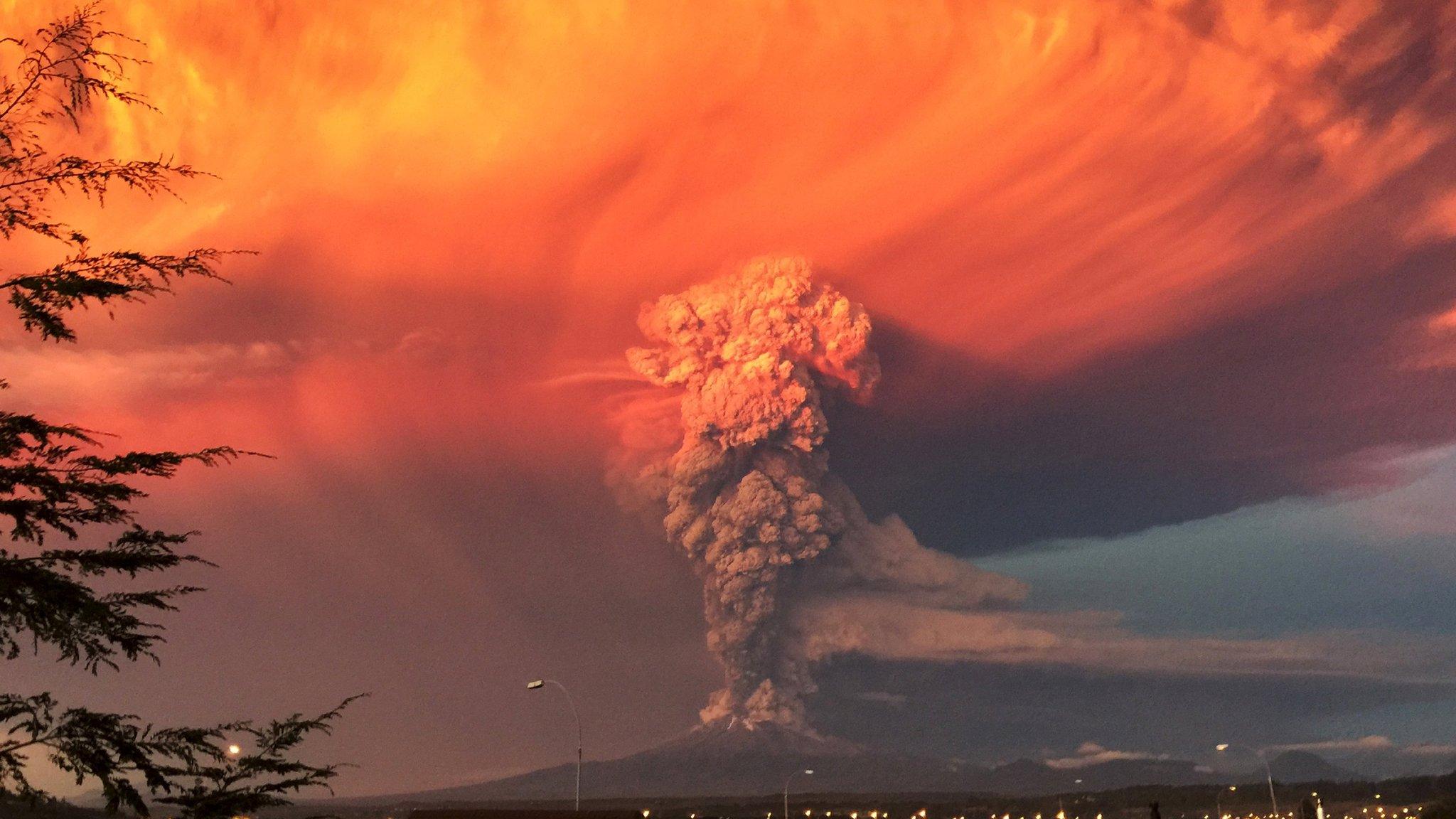
- Published4 March 2015
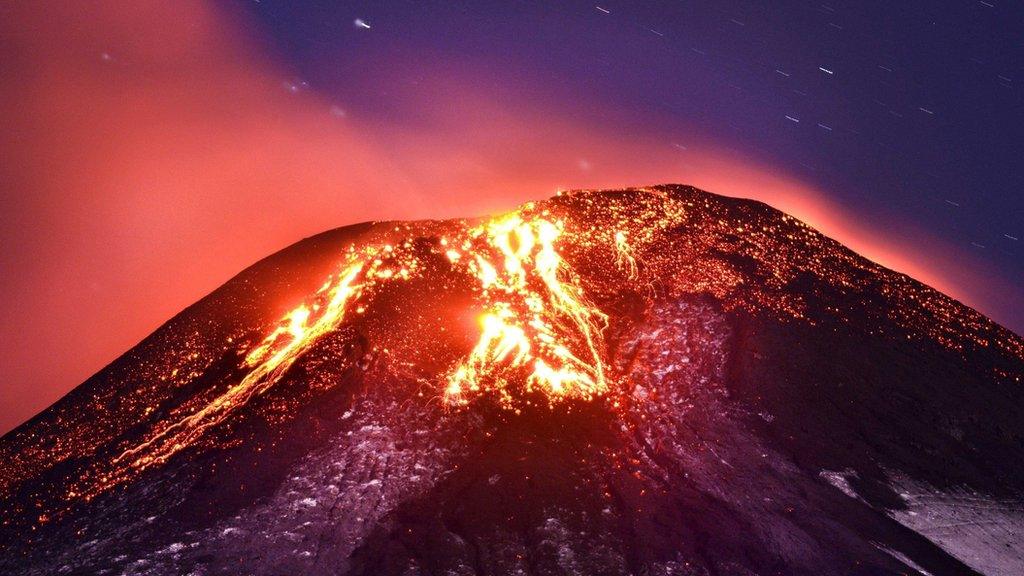
- Published16 August 2015
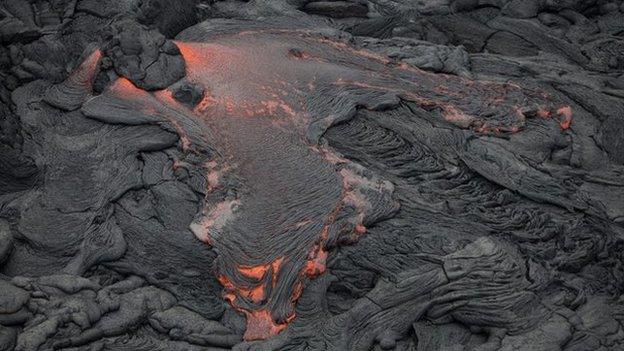
- Published4 March 2015
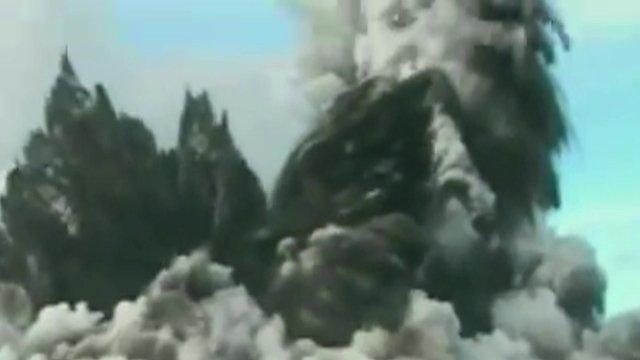
- Published16 August 2015
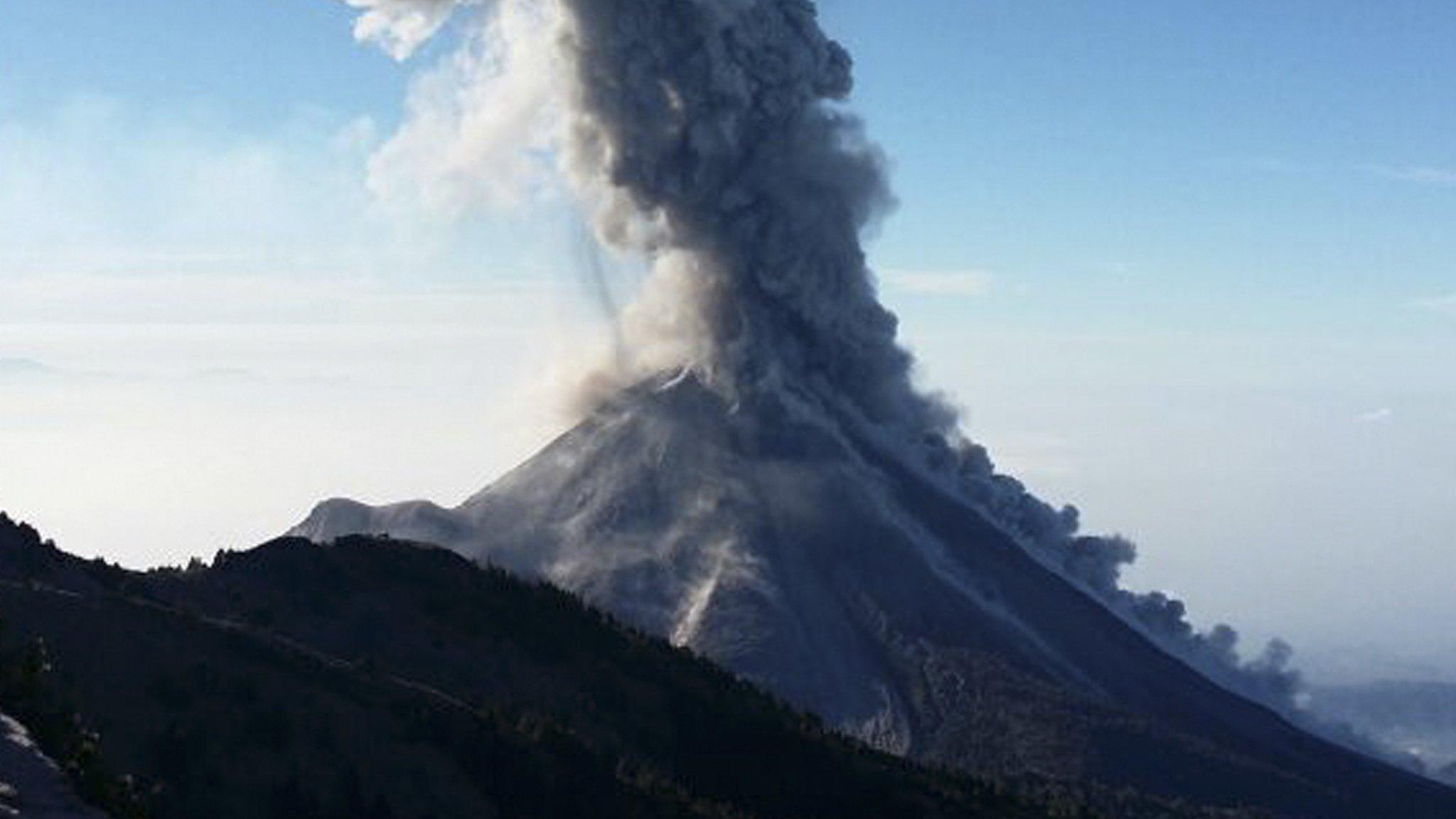
- Published28 May 2015

